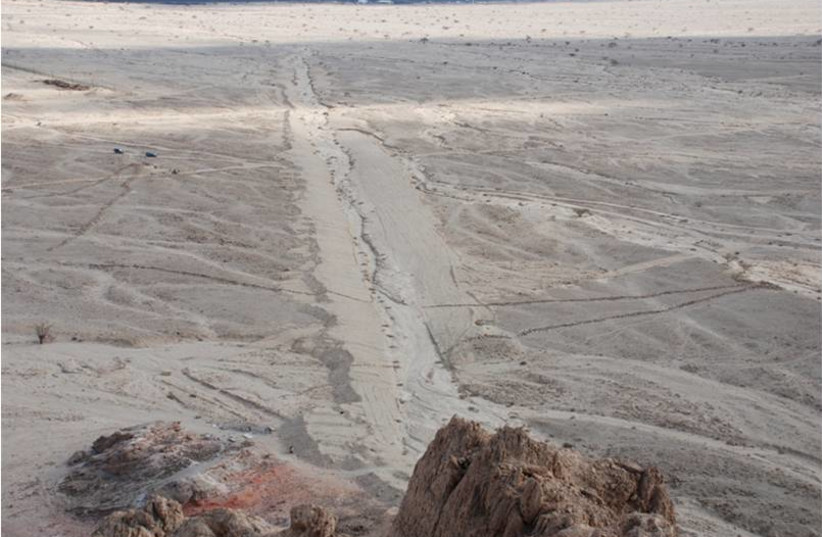Although human constructions have changed natural spaces for thousands of years, few plans or maps predate the period of the literate civilizations of Mesopotamia – modern-day Syria and Iraq – and ancient Egypt.
But now, researchers from the French research organization Centre National de la Recherche Scientifique (CNRS), together with Prof. Dr. Frank Preusser from the University of Freiburg (the fifth-oldest university in Germany) have now been able to identify engravings in Jordan and Saudi Arabia as the oldest known true-to-scale construction plans in human history.
The 8,000 to 9,000-year-old engravings depict so-called desert dragons – kilometer-long prehistoric megastructures that were used to trap animals. “Conclusions can be drawn from the findings about the people of the time. The ability to transfer a large space to a small, two-dimensional plan represents a milestone in intelligent behavior,” explained Preusser. The results – which were recently published in the scientific journal PLOS ONE under the title “The oldest plans to scale of humanmade mega-structures," should help to understand how desert dragons were conceived and built.
“The extreme precision of these engravings is remarkable, representing gigantic neighboring Neolithic stone structures, the whole design of which is impossible to grasp without seeing it from the air or without being their architect, user or builder,” the team wrote. “They reveal a widely underestimated mental mastery of space perception, until now never observed at this level of accuracy in such an early context. These representations shed new light on the evolution of human discernment of space, communication, and communal activities in ancient times.”
Both finds are representations of nearby desert dragons engraved with stone tools. First sighted from planes a century ago, desert dragons up to five kilometers long consist of stone walls that converge in a complex bounded by pits. Archaeologists reached the conclusion that they were used for large-scale trapping of wild animals.

In Jordan, there are eight desert dragons in the area of Jibal al-Khasabiyeh. There, the researchers found a depiction engraved in stone that measures 80 cm by 32 cm, its age is about 9,000 years. At Jebel az-Zilliyat in Saudi Arabia, two visible pairs of dragons are found three-and-a-half kilometers apart. Here, too, a scaled engraving dating back about 8,000 years was discovered with a total length of 382 cm and a width of 235 cm.
Plans of large structures have until now been shown only by rough representations, in stark contrast to the precision of the engravings of al-Khashabiyeh and az-Zilliyat.
The question of their exact use and how they were implemented, especially due to the difficulty of grasping the entire complex from the ground remains for the time being the secret of the people who created them, the team concluded.
